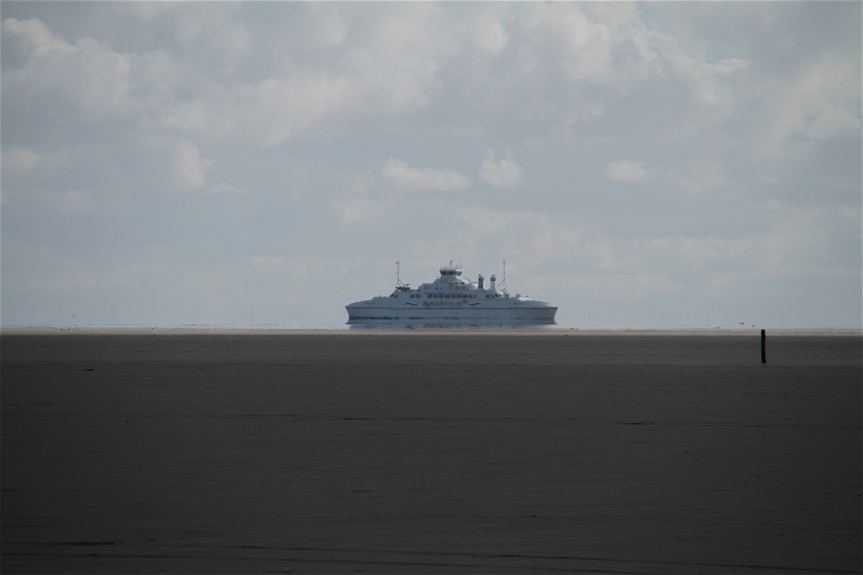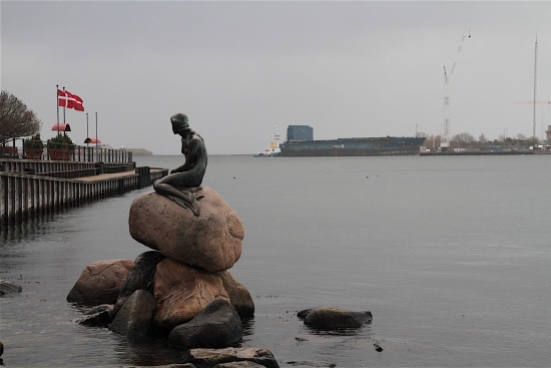Click the photos to enlarge
My view of the Vikings are really a scary image in my head of Hägar or Hiccup’s Dad being afraid of nothing and causing fear in everybody crossing their paths. But that reality has long gone. It is sort of generally accepted that that age lasted from the Viking raid on the Lindisfarne Monastery in Northern England in 793 until the battle of Hastings in 1066, a seriously brutal 273 years in northern Europe. Denmark is seen as the historical home to the Vikings and though once feared across Europe for their raids and killing sprees they have significantly calmed down. The modern day Viking, if we consider the Danes’ Viking heritage, is a ‘peaceful bunch that traded their long-ships for bicycles’ (according the the Visitdenmark website).
I think, after my week long traveling through Denmark, I can concur that they are actually a civilised and peaceful looking bunch, with plenty of modern engineering evidence in some awesome bridges and beautiful nature being preserved. Maybe too civilised as well. Denmark is regarded as the world’s happiest country, measured on criteria such as a strong social support system, freedom to live as one please and low perceived business and government corruption. Especially number two, living as one please was very insightful for me, as we went for a short stroll through the notorious free town of Christiana.
Christiana is sort of a hippy commune, to this day. It was founded in 1971 in an abandoned military camp in Copenhagen. For about 4 decades it was nothing more than a hippy squatter camp where selling and smoking all sorts of funny stuff was ‘accepted’ by turning a blind eye. Since 2011, the property was negotiated to belong to the community and residents could apply to get a living space. Its still a dump, don’t get me wrong, but its an interesting dump. Hippies trade and live and smoke and seem generally happy, but according to some warnings, you should not be too relaxed. Specific warnings against taking photos are plentiful and can apparently turn violent if disobeyed. However, we strolled deep into Christiana, up to a point where the hairs in the back of your neck told you to rather turn back and head out. Scrutinising eyes and disapproving gazes started to feel threatening. We turned back before we could see if there’s still a bit of Viking smouldering in the modern day Dane living in Christiana.
Copenhagen in general is a beautiful city, with plenty of sights and interesting spots to explore. Its also small enough that its okay to stay in town, have two days at leisure and by foot see most of the city and if you’re lucky enough, even stumble onto the changing of the guards. As with most first visits to new destinations, I do believe you should tick off the obvious attractions, be it only to chat along in the future with a ‘yes, the Copenhagen Mermaid is smaller than I thought, or ‘no, I thought Christianshavn was as beautiful as I imagined, and not overly touristy! Is it overly touristy if there’s always a Chinese restaurant as well?’
A sad reality, which stayed with me since I saw Out of Africa, was the fact the Karen Blixen never returned to Africa after she ‘had a farm in Africa’ for 17 years. I had to see for myself how wonderful a place she had in Denmark to permanently give up her African farm, and I found that surely the family pressure to give up that farm must have been huge. We visited her home in Rungstedlund but unfortunately the museum house was closed. It’s a nice enough setting and beautiful manor and I hopefully one day will get the chance to see the inside, but that farm in Africa!!
Denmark is fairly small. To put it in perspective, from Karen’s house on the east coast to our destination, Esbjerg on the west coast, is a mere 318km or just just more than twice the size of the Kruger National Park back home. Furthermore, for comparison purposes and simply because it is interesting, there are according to the 2011 census 6.85 million Afrikaans speakers (first language) in South Africa, while there are about 6 million Danish speakers (first language). Adding all the expats nowadays, there’s probably a million more Afrikaans speakers spread all over the world; I personally know of at least 7 in Köln.
Thus, it was a easy leisurely drive east, stopping at Roskilde’s Viking Museum to have a coffee and sandwich with Hägar and company, before having the coldest photo-shoot of my life at the awe-inspiring Storebælt suspension bridge at Halsskov. If the Vikings have gone soft, they surely make up for that loss in their gained skills for building infrastructure. This is a magnificent bridge, consisting of three ‘sections’; a suspension motor highway (pun intended as its 65 meters above the sea) and 6.7km long. With its 65 meters clearing, the world’s largest cruise ship class can pass under the bridge with its smoke stack folded. This ‘East Bridge’ part is the third longest suspension bridge in the world and is complemented with a twin tunnel rail system which provide thorough fare for trains, under the sea, with the two tunnels being 8 km long. From the little island Sprogø to the mainland at Knudshoved the cars and trains commute side by side across a box girder bridge that is 6.6 km long and with an 18 meters clearing. But let me say again, this place can be cold. That wind blows from Greenland across Iceland and the icy North Seas, makes a sharp right turn before Gothenburg to come and freeze curious travellers who dare to exit their cars for a photo or coffee break. Dress warmly!
Denmark is a fascinating country, but the best of the best sights for me surely was the natural wonder and the pure awe of the Creation visible at the west coast Wadden Sea islands, such as Rømø. Here, we waded on the beaches of the Wadden Sea (Vadehavet in Danish) where its wide, long and flat and beautifully serene. I constantly had the images in my head from a translated TV series I watched as a kid, where ‘Sill se Lobke’ roamed the beaches with her farther as ‘Strandlopers’ (beach drifters) to collect the wreckage and stuff washed up on the beaches from ships, and which they could use or sell. I know Sill was from Sweden, but the scenes were the same. It took me back in time to my childhood and reminded me how I always wanted to travel and see places such as those beaches Sill and Lobke frequented, and now I was so blessed to be able to that, with my best travel buddy at my side. The Wadde Sea is a large part of the north-western coast of the Netherlands, Germany and Denmark and is listed on the UNESCO World heritage lists. Some parts are well developed, such as the German island, Sylt (and then seriously expensive too at €95 to ferry your car over by the compulsory train), but there are magnificent natural and nature rich areas kept in its natural conservation state. It must be visited, even just to see that you need to time your visits carefully. We booked a room through Booking.com without realising the reality of the area, on the island Mandø. Approaching the town of Ribe en route to Mondø, we received a call from the innkeeper saying we can’t come, ‘ve are flooding’.
We then Google searched and realised the road from the mainland to the island is a dirt road, thus not really ‘flat car’ accessible for one-, but a more significant reason, its covered by anything between 50 to 100 cm of sea during high tide, and this was high tide.



The world is small. We booked into an Air B&B near the rural town of Skærbæk on a farm for one evening. The owner was not around and the farmhand came to provide the necessary towels and stuff. After chatting and discovering that we are South Africans, he confessed to also being a Saffa, Wilhelm Schutte, from Schoemansville, a little town on the outskirts of Pretoria. Then we spent a lovely few hours chatting in Afrikaans over a South African red wine we bought in the Danish ‘platteland’ with a ‘Danish’ farmer who’ve been working in Europe for more than 20 years.
After a quick overnight visit to Sylt, we headed home. Sylt is beautiful, but to my taste, the more natural and less touristy islands in the Danish part of the Wadden Coast are a much better destination. I’ll go again.

Heading home, meant crossing the Nord-Ostsee Kanal, one of the other engineering sights I had on my to-do list for this trip. This canal crosses Germany’s neck and allows larger seafaring ships to cut hours from their trip between the North- and the Baltic Seas. Our timing was good and I was able to see a large ship deep inland crossing the continent.
It was a terrific week of driving through Denmark, and my conclusion in this day and age; ‘Something is not rotten in Demark’!










